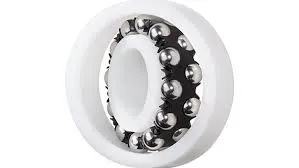
Nov . 21, 2024 16:57 Back to list
6210 bearing size
Understanding the 6210 Bearing Size A Comprehensive Overview
Bearings are integral components in many mechanical systems, providing support and facilitating motion between different machine parts. One widely used bearing type is the 6210 bearing. This article delves into the specifications, applications, and significance of the 6210 bearing size, helping readers appreciate its importance in various industries.
What is a 6210 Bearing?
A 6210 bearing is a single-row deep groove ball bearing. The nomenclature is indicative of its dimensions and design. The number 6210 can be broken down as follows
- 6 The series number represents the bearing type, indicating that it is part of a deep groove ball bearing series. - 2 This digit indicates the bore size, which in this case, corresponds to a shaft diameter of 50 millimeters. - 10 This number describes the width, which is typically 21 millimeters for this specific bearing.
Thus, the 6210 bearing has a bore diameter of 50 mm, an outer diameter of 90 mm, and a width of 21 mm. These dimensions make it suitable for a variety of applications where a moderate load capacity is required.
Key Features of the 6210 Bearing
1. Versatility The 6210 bearing design allows it to operate in both radial and axial loads, making it a versatile choice for different mechanical applications. 2. Durability Construction from high-quality materials means that 6210 bearings exhibit excellent resistance to wear and tear, prolonging their lifespan even in demanding environments.
3. Easy Maintenance Many manufacturers produce 6210 bearings with seals or shields that protect against contaminants such as dust and moisture, which helps in maintaining the bearing's integrity without frequent servicing.
4. Standardization The 6210 size follows industry standards, making it readily available and compatible with various equipment. This standardization is crucial for manufacturers and repair shops as it ensures ease of replacement.
Applications of 6210 Bearings
6210 bearing size

The versatility of 6210 bearings allows for their use in diverse applications across various industries
- Automotive In vehicles, these bearings are commonly found in wheel hubs, electric motors, and air conditioning compressors, where they ensure smooth rotation and minimize noise.
- Electric Motors The 6210 bearing is extensively used in electric motors because it can handle high speeds and provide stability, essential for motor efficiency.
- Industrial Machinery Many types of machinery, such as conveyor systems, pumps, and compressors, utilize 6210 bearings for their load-bearing capabilities.
- Home Appliances From washing machines to air conditioners, numerous home appliances rely on the smooth performance provided by 6210 bearings.
Importance of Choosing the Right Bearing
Selecting the appropriate bearing for a specific application is critical. The 6210 bearing is often chosen for its balance between load capacity and size, but it is essential to assess the operational conditions—such as load, speed, and environment—when selecting a bearing. Using a bearing that is not suited for its specific application can lead to premature failure, resulting in costly downtimes and repairs.
Conclusion
The 6210 bearing is a testament to engineering excellence, embodying durability, versatility, and efficiency. With its standard specifications, it finds itself in numerous applications across different sectors, proving that sometimes the simplest designs can yield the most significant results. Whether in automotive applications or industrial machinery, understanding the specifications and potential uses of 6210 bearings can lead to better decision-making in equipment design and maintenance.
In the ever-evolving landscape of mechanical engineering, the 6210 bearing stands out as a reliable choice, essential for the continuous operation of countless machines and systems. As industries innovate and push the boundaries of technology, the foundational aspects provided by components like the 6210 bearing remain crucial in ensuring seamless function and performance.
Latest news
-
Premium Deep Groove Ball Bearings | High Speed & Reliability
NewsAug.29,2025
-
Durable Scaffolding Clamps - Secure & Reliable Tube Connectors
NewsAug.28,2025
-
Common Failures in Thrust Ball Bearings and Solutions
NewsAug.22,2025
-
How Tapered Roller Bearings Can Take Shock Loads
NewsAug.22,2025
-
Angular Bearings in High-Precision Spindles
NewsAug.22,2025
-
The Impact of Misalignment on Cylindrical Roller Bearing Performance
NewsAug.22,2025
